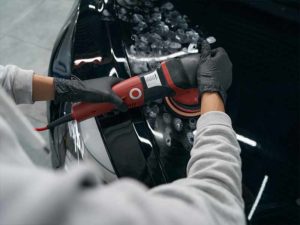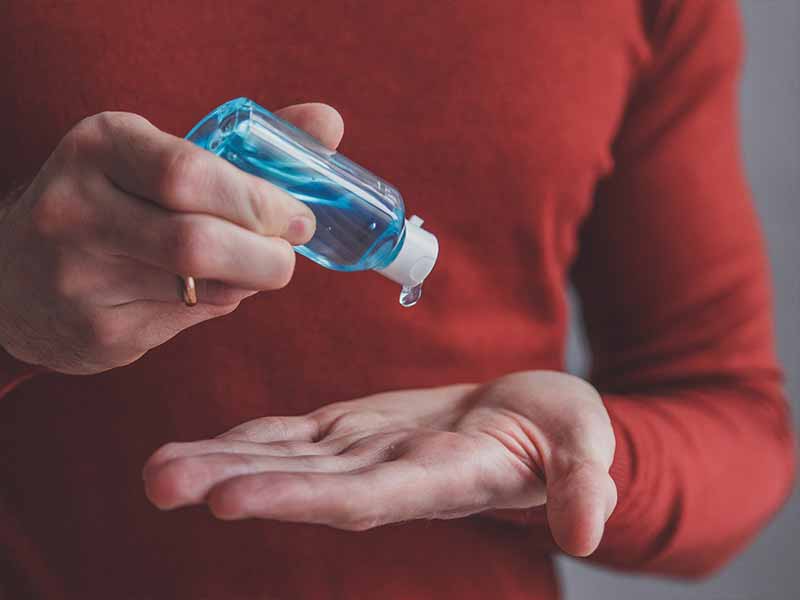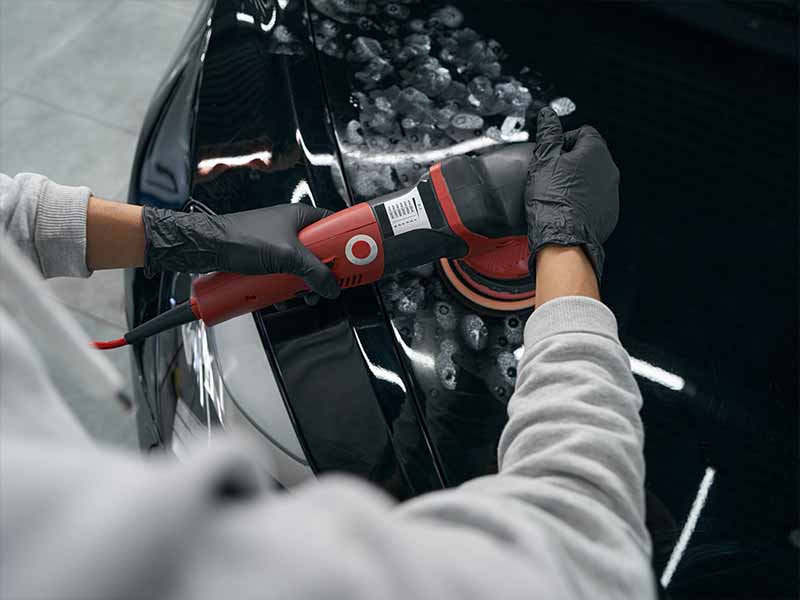Table of Contents
Touch up paint helps to cover up scratches, stone chips, and other imperfections that damage the clear coat and paint. But too much touch up paint could get onto other painted surfaces or trim.
When that happens, you need to know how to remove dried touch up paint without damaging the clear coat or factory paint.
How to remove touch up paint from a car
- Gently chip away as much excess touch up paint as possible.
- A toothpick or fingernail are safe choices for this job.
- Be careful to not damage the OEM paint underneath.
- Use mineral spirits, acetone, lacquer thinner, or nail polish remover to remove any remaining touch up paint.
- Use a polish to buff the area when finished.
If you remove the touch up paint incorrectly, you could damage your car’s paint and make the situation worse instead of better.
Important Note: If you have simply applied too much touch up or need to smooth out a touch up paint blob to blend it in, check out our article on how to smooth out touch up paint.
The following will help you to remove touch up paint from your car’s paint and make it look great again.

How to remove dried touch up paint from car paint
The easiest way to remove dried touch up paint is with your fingernail if the paint is lifting slightly. Paint does not adhere well to the exterior if the surface is not prepped correctly.
When touch up paint is slapped onto a scratch or other imperfection, it tends to have a loose connection to the paint underneath. Moisture can get underneath the flake-like edges and light the touch up paint.
When the edges of touch up paint start to lift, you might be able to get your fingernail or a thin piece of plastic underneath and lift it off. A plastic scraper used to apply body filler works great.
If the touch up paint has a better bond with the car paint and will not lift, you can wet sand it off and polish the paint when you are done. Wet sanding requires very fine grit sandpaper and a sanding block to do the best work. A small block of wood works great.
Will mineral spirits remove touch up paint?
Mineral spirits will remove the paint from your touch up job. It works best if you can use a cotton swab to apply a very small amount onto the paint that you want to remove. As you apply a little bit more with each swabbing, you will notice more paint starting to lift from the surface underneath.
The solvent can work very well in place of paint thinner or lacquer thinner because it is more user-friendly. A small amount dabbed onto the paint that you do not want to remove can wipe off easily and not harm the original paint.
Will lacquer thinner remove touch up paint?
Lacquer thinner absolutely could remove touch up paint. It also could remove clear coat and car paint along with the touch up paint. And that could be the opposite of what you intended. So you have to ue lacquer thinner very carefully to do the job right.
Paint thinner should be used very sparingly and only on surfaces upon which you intend to do more work after removing the touch up paint.
Will acetone remove touch up paint?
Acetone will remove touch up paint. You need to apply it sparingly and with a very fine brush to ensure you do not damage the car paint or clear coat. Acetone works well as a paint thinner and can do a great job of leveling and removing unwanted paint.
Will clay bar remove touch up paint?
A clay bar has only very mildly abrasive and mostly is not suitable for removing touch up paint. It could help with very minor overspray. But most touch up applications on car paint will not come off by using clay bar. You would be better off using rubbing compound, wet sanding the surface, or using solvents if you intend to remove paint.
Will nail polish remover remove touch up paint?
You might be surprised to learn that nail polish remover is an excellent choice for removing touch up paint. The acetone in nail polish remover works very well on touch up paint.
The thick nature of nail polish remover and the included nail brush are ideal for applying to touch up paint while avoiding surrounding paint. You can put on a small amount and let the acetone do its work for a few minutes before removing the touch up paint.
You might need to use more than one application of nail polish remover to get all of the touch up paint off of the car paint.
Will rubbing alcohol remove touch up paint?
Rubbing alcohol can work well for removing uncured paint and some minor applications of touch up paint. You need to use a cloth or microfiber towel to apply the rubbing alcohol on the touch up paint that you intend to remove. The cloth will help to scrub out the excess paint but will not affect the surrounding paint surface.

Uneven touch up paint fix
Applying touchup paint can lead to uneven paint surfaces. Fortunately, you can use either paint leveler or very fine sandpaper to level the uneven touch up paint and improve the look. An uneven surface will catch the light and draw attention to the touch up job. That is the opposite of what you want to accomplish.
You can apply a small amount of paint leveler onto a microfiber cloth and gently work it onto the touched-up surface. The leveler will remove the excess paint and leave what is needed to properly fill the scratch or chip in the paint. Then you can polish the repair and make it less visible.
Sanding touch up paint
Another way to level touch up paint and remove excess amounts is to wet sand it out. You need to use very fine wet or dry sandpaper. Anywhere from about 1,000 grit sandpaper to 1,500 grit sandpaper should work well.
You need a small and flat piece of wood or similar object to help remove only the excess paint. You can either spray some water onto the paint that you intend to level or dip the sandpaper into some water and use the sanding block to sand and level the paint that you added.

How to touch up car paint like a pro
A simple four-step process can help to make scratched or chipped paint look as good as new. You need to start with some basic materials to do the job properly. A small amount of time and a little patience could produce professional results.
Step 1 – Prep the Surface
You need to ensure there is no wax, sealer, or other materials on the surface that you intend to touch up. You can use wax remover applied to a microfiber towel and work it over the surface to remove any wax, tar, or other materials.
Step 2 – Match the Color
You have to use the correct color paint to make the touch up look good. An automotive paint supplier should be able to run the VIN number on your vehicle and provide a matching sample that you can use to touch up the paint.
If you are using a paint pen or a brush to touch up the paint, you should start with thin coats. Applying them gradually will help to build up the paint and make the color match better.
Step 3 – Remove Excess Paint
You likely will have a small amount of excess paint to remove. You can use some lacquer thinner or other solvent to remove excess amounts of the freshly applied paint. You need to be careful and use a small amount of lacquer thinner or other solvent to remove only the newer paint.
Step 4 – Polish the Paint
After you are done matching and leveling the touch up job, some rubbing compound and a microfiber cloth will help to blend it in better. You can wet the cloth, add a small amount of rubbing compound, and apply some elbow grease to get the best results.

How long does touch up paint take to cure?
Depending on the type of paint used to touch up a scratch or other imperfection, it usually takes no more than a day to cure. Some fast-drying and fast-curing paints could cure in just a couple of hours.
Is touch up paint permanent?
If you prep the surface properly, apply the paint correctly and allow it to cure fully, your work should last as long as the factory paint. That is the real beauty of touch-up work. For a small amount of money and a little time investment, you could get excellent and long-lasting results.
Conclusion
Car owners can correct the stone chips and scratches that damage car paint over time without spending a lot of time or money.
Instead of paying for a paint job, a touch-up can accomplish as good a result that can last a long time.









